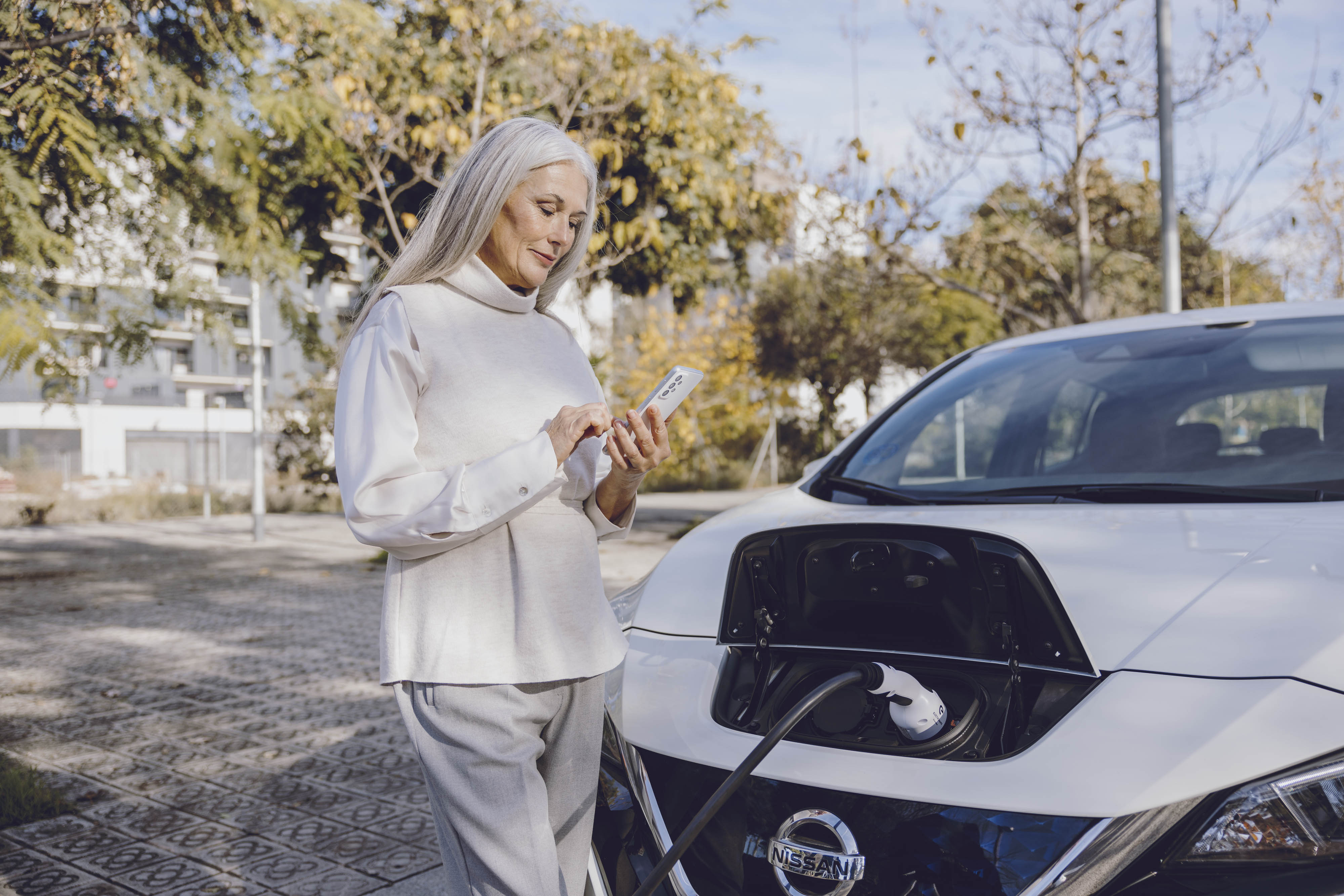In an age where our lives are increasingly intertwined with technology, the demand for quicker, more efficient charging methods has grown exponentially. As smartphones, tablets, laptops, and even electric vehicles (EVs) become integral parts of our daily routines, the concept of fast charging has emerged as a solution to one of the most common tech-related inconveniences: battery life. However, while fast charging is a welcome innovation and is growing in Europe, it also comes with its own set of myths, misunderstandings, and questions. This article aims to demystify fast charging by exploring what it is, how it works, its impact on battery life, and the scenarios in which it is most convenient.
What is Fast Charging and How Does it Work?
Understanding Fast Charging Technology
Fast charging technology for EVs is designed to significantly reduce the time it takes to recharge a vehicle’s battery, making electric vehicles more practical for everyday use.
- High-Power DC Charging: Fast charging for EVs primarily uses direct current (DC) at high power levels, often ranging from 50 kW to over 350 kW like the Wallbox Supernova ,depending on the charger and the vehicle’s capacity. This allows for much quicker charging compared to standard AC charging.
- Battery Management System (BMS): The BMS in EVs plays a crucial role in fast charging by monitoring the battery’s health, temperature, and charge levels. It ensures that the battery is charged efficiently while protecting it from potential damage due to overheating or overcharging.
- Voltage and Current Control: Fast charging works by delivering higher voltage and current to the battery, which speeds up the charging process. However, the vehicle’s BMS carefully regulates these parameters to maintain safety and battery longevity.
Understanding these components is essential for making the most of fast charging technology, ensuring that your EV charges quickly and safely while on the road.
How Does Fast Charging Work?
The process of fast charging is not merely about pumping more power into the battery. It involves intelligent management of the charging process to ensure safety and efficiency. Here’s how it works:
- Negotiation: When a fast charger is connected to a compatible device, they first "negotiate" the power level. The charger communicates with the device to determine the maximum voltage and current the battery can safely handle.
- Boosting Voltage and Current: Once the power level is agreed upon, the charger increases the voltage and/or current to deliver more power to the battery. This is where different standards and technologies come into play, with some using higher voltages, others higher currents, or a combination of both.
- Battery Management System (BMS): The device’s Battery Management System (BMS) plays a crucial role in monitoring the battery’s temperature, voltage, and current during the charging process. If the battery gets too hot or if the voltage exceeds safe levels, the BMS will throttle down the charging speed to protect the battery.
- Tapering Off: Fast charging is most effective when the battery is at a low charge. As the battery nears full capacity, the charging speed gradually reduces to prevent overheating and to extend the battery's overall lifespan. This is why you may notice your device charging very quickly up to a certain percentage, but then slowing down as it approaches full charge.

Fast Charging Standards and Compatibility for Electric Vehicles (EVs)
EV fast charging relies on specific standards that determine the charging speed and compatibility with various vehicles and charging stations. Understanding these standards is crucial for efficient and safe charging.
- CHAdeMO: A fast charging standard used primarily by Japanese EV manufacturers. It allows for high-power DC fast charging and is commonly found at charging stations across the globe.
- CCS (Combined Charging System): Widely adopted in Europe and North America, CCS combines AC and DC charging into a single port, offering versatile and fast charging capabilities compatible with many EV models.
- Tesla Supercharger: Tesla’s proprietary fast charging network, designed specifically for Tesla vehicles, offering high-speed charging at dedicated Supercharger stations worldwide.
- GB/T: The fast charging standard used in China, supporting high-power DC charging and commonly used by Chinese EV brands.
When choosing an EV or planning charging stops, it’s important to know which fast charging standards your vehicle supports to ensure compatibility with available charging stations.
Myths and Facts About the Impact on Battery Life

Myth 1: Fast Charging Drastically Reduces Battery Lifespan
One of the most pervasive myths about fast charging is that it significantly reduces the battery's lifespan. While it is true that fast charging generates more heat, which can affect battery health, modern batteries and charging systems are designed to manage this risk.
Fact: Fast charging does cause more stress on the battery compared to slower charging, but this impact is often minimal due to the intelligent charging algorithms used by modern devices. The Battery Management System (BMS) ensures that the battery is not overcharged and that heat is kept within safe limits. As long as fast charging is used appropriately, the reduction in battery lifespan is often negligible. - If you want to learn more about how fast charging really impact battery life, read our complete article about it -
Myth 2: Fast Charging Can Damage Your Device
Another common concern is that fast charging can physically damage the device, either by overheating or by delivering too much power.
Fact: Fast charging is safe when using compatible chargers and devices. The charging process is highly regulated by both the charger and the device’s BMS. They work together to ensure that the charging process does not exceed the battery's safe operating conditions. Damage is more likely to occur when using unapproved or counterfeit chargers that do not adhere to safety standards.
Myth 3: You Should Avoid Using Your device While Fast Charging
Many people believe that using a device while it's fast charging can lead to overheating and damage.
Fact: While it’s true that using a device while charging can generate additional heat, most modern devices are designed to handle this. The BMS will adjust the charging speed to compensate for any extra heat generated by the device's usage. However, it’s still a good practice to minimize heavy usage during charging to avoid excess heat.
Myth 4: Fast Charging Wastes More Energy
Some believe that fast charging is less efficient and wastes more electricity compared to traditional charging methods.
Fact: Fast charging is generally very efficient. While the process may involve slightly more energy consumption due to the higher power levels, the difference is typically negligible. The overall energy efficiency depends more on the charger’s quality and the device's BMS than on the charging speed itself.
Understanding Battery Degradation
All lithium-ion batteries degrade over time, whether they are fast charged or not. This degradation is a natural consequence of the chemical reactions that occur within the battery. However, factors like temperature, charging cycles, and how a device is charged can influence the rate of degradation.
- Heat: High temperatures accelerate battery degradation. Fast charging generates more heat, but modern devices mitigate this with cooling mechanisms and by slowing down charging when temperatures rise.
- Charging Cycles: A charging cycle is defined as a full 0% to 100% charge. Most lithium-ion batteries are rated for a certain number of cycles before they start to lose capacity. Fast charging does not necessarily increase the number of cycles but can contribute to wear if not managed properly.
- Charging Habits: Keeping the battery between 20% and 80% charge and avoiding frequent deep discharges can help prolong battery life. Fast charging is best used when needed, rather than as a default method for every charge.
-You can learn more about EV batteries in our last article-
Cases in Which it is More Convenient to Use Fast Charging for EV’s

Long-Distance Travel
One of the most significant benefits of fast charging for EVs is during long-distance travel. When you're on a road trip or traveling between cities, fast charging stations can provide a substantial charge in a short amount of time, allowing you to reach your destination without prolonged stops.
- Highway Charging Stations: Many highways and major routes are now equipped with fast charging stations specifically designed for EVs. These stations can provide a substantial battery boost in 30 minutes or less, ensuring that long-distance travel is feasible and convenient.
- Rest Stop Convenience: During a quick rest or meal break, fast charging allows you to recharge your EV’s battery, so you can continue your journey without unnecessary delays.
Urban Commuting
In urban environments, where parking and charging opportunities can be limited, fast charging is particularly advantageous. EV drivers can top up their batteries quickly during short stops, making it easier to maintain a full charge throughout the day.
- City Charging Hubs: Urban areas increasingly feature fast charging hubs where EV owners can quickly charge their vehicles while shopping or running errands, minimizing downtime.
- Workplace Charging: For those who commute to work, fast charging stations at or near workplaces allow EVs to be recharged during the workday, ensuring you have enough range for the return trip and other activities.
Emergency Situations
Fast charging is crucial during emergencies when you need to quickly power up your vehicle to reach safety or continue essential travel.
- Power Outages: In the event of a power outage at home, public fast charging stations can be a lifeline, allowing you to charge your EV and stay mobile during emergencies.
- Unexpected Travel Needs: If you need to make an unexpected trip, fast charging can quickly give your EV enough range to get you where you need to go without delay.
High-Demand Driving Needs
For drivers who frequently use their EVs for work or high-mileage activities, fast charging ensures that the vehicle can be quickly recharged and put back into service.
- Rideshare and Delivery Drivers: Fast charging is essential for drivers in the gig economy, such as those working for rideshare or delivery services, allowing them to maximize their driving hours and earnings without long charging breaks.
- Fleet Vehicles: Businesses that rely on electric fleet vehicles benefit from fast charging to keep their operations running smoothly, ensuring that vehicles are always ready for the next job.
Multi-Vehicle Households
In households with multiple EVs, fast charging helps ensure that all vehicles are charged and ready for use without lengthy waiting periods.
- Shared Charging Stations: Fast charging is particularly useful in homes or apartment complexes where charging resources are shared. Quick charging sessions reduce the time each vehicle needs to occupy the charging station, making it more accessible for everyone.
Fast charging is transforming the way we use and think about electric vehicles, making them more practical for a wider range of situations. Whether you’re on a long road trip, navigating city life, or dealing with unexpected travel needs, fast charging provides the convenience and flexibility needed to keep your EV ready for action.
Conclusion
Fast charging is a powerful tool in the modern tech arsenal, offering convenience and efficiency for a wide range of scenarios. While it’s important to understand the potential impacts on battery health, the benefits of fast charging often outweigh the risks, especially when used correctly. By debunking myths and providing clear information about how fast charging works, users can make informed decisions about when and how to use this technology to its fullest potential. Whether you’re in a rush, on the go, or simply need to keep your devices ready for action, fast charging is a technology that meets the demands of today’s fast-paced world.









.png)
%20(1).png)




.png)


